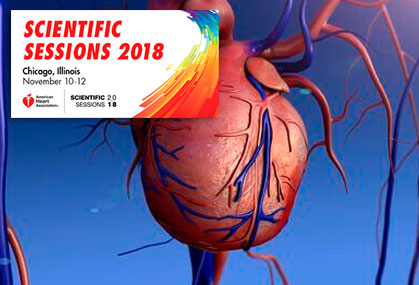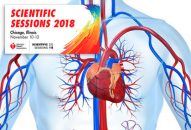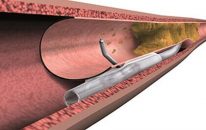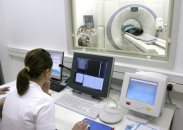Following up on the 30 day and one year effect, the IABP-SHOCK II trial long term outcomes showed there is not benefit to the use of intraaortic balloon counterpulsation in cardiogenic shock patients undergoing acute myocardial infarction. The only work in this group of patients with long term follow up is the SHOCK trial published in…
AHA 2018 | Endocarditis Prophylaxis More Limited after AHA 2007 Guidelines
The incidence of infective endocarditis had decreased after AHA 2007 recommendations. At present, some patients are not receiving antibiotic prophylaxis as they should. After AHA restricted the use of antibiotic prophylaxis in 2007, high-risk patients undergoing dental procedures were prescribed less antibiotics. These patients had always been prescribed antibiotic prophylaxis, regardless they had less restrictive…
AHA 2018 | Freedom Long-Term Follow-up: Still in Favor of CABG
Nearly 8 years later, CABG maintains its benefit over PCI-DES in terms of mortality in diabetic patients with multivessel disease, according to the Freedom trial, presented by Dr. Fuster at AHA and simultaneously published in JACC. CABG is superior to PCI-DES, with 36% higher mortality in these last years. Considering the nature of atherosclerosis,…
Clinical Improvement Without Ventricular Function Improvement After CTO
The benefits offered to patients by attempting the rechanneling of a chronic total occlusion are still unclear. Additionally, sometimes the procedural risks are somewhat undetermined. Taking into account these controversies, this work sought to prove whether successful rechanneling of a chronic total occlusion improves ventricular function. This is not a soft endpoint; it has been…
CoreValve US Pivotal High Risk Trial: at 5 years, similar results
Courtesy of Dr. Carlos Fava. We are well aware of transcatheter aortic valve replacement’s (TAVR) effect in high-risk or inoperable patients at 5 years, even more after the PARTNER 1 trial. Yet, the outcomes of another relevant randomized study remained pending: el CoreValve US Pivotal High-Risk Trial. The CoreValve US Pivotal High-Risk Trial looked at the…
Clinical Utility of CT-Derived FFR for Decision-Making
In this large international multicenter population, computed-tomography (CT)-derived fractional flow reserve (FFR) modified treatment recommendation in two-thirds of subjects compared with CT angiography alone, and it was associated with less negative invasive angiographies. It also predicted revascularization and identified low-risk patients. A non-invasive means to know the anatomy and function of patients with stable chronic…
Cautious Administration of Supplemental 02, Especially in Acute Stroke or MI
Recent studies show the potential damaging effect of supplemental oxygen in the context of acute stroke and myocardial infarction. Experts now say that it should not be used in patients with >92% oxygen saturation. These guidelines have looked into the most recent studies, including the DET02X-AMI, which suggest supplemental oxygen therapy could increase mortality in…
Safety of Combining New Anticoagulant Agents and Dual Antiplatelet Therapy
Atrial fibrillation is the most common arrhythmia and its combination with a history of acute myocardial infarction or coronary angioplasty is quite frequent. According to this study (recently published in JACC), in a real-world population, the combination of direct anticoagulant agents and dual antiplatelet therapy reduces significantly the risk of bleeding and provides similar thromboembolic…
Surprises in the Physiopathology of Critical Ischemia
Luminal thrombotic occlusions associated with non-significant atherosclerosis are commonly observed in patients with critical lower limb ischemia, which suggests the possibility of thromboembolic disease as a great contributor to ischemia. This was particularly verifiable in infrapopliteal vessels, thus showing a possible mechanism of progression from peripheral vascular disease to critical ischemia, as well as a…
Differences in Stroke between TAVR and SAVR in Intermediate Risk Patients
Transcatheter aortic valve replacement (TAVR) is more and more frequent in lower risk populations that had previously been treated with surgical valve replacement (SAVR). A small difference in neurological events could have significant consequences when it comes to deciding a course of action. This study is a sub-analysis of the randomized study SURTAVI (Surgical Replacement…









